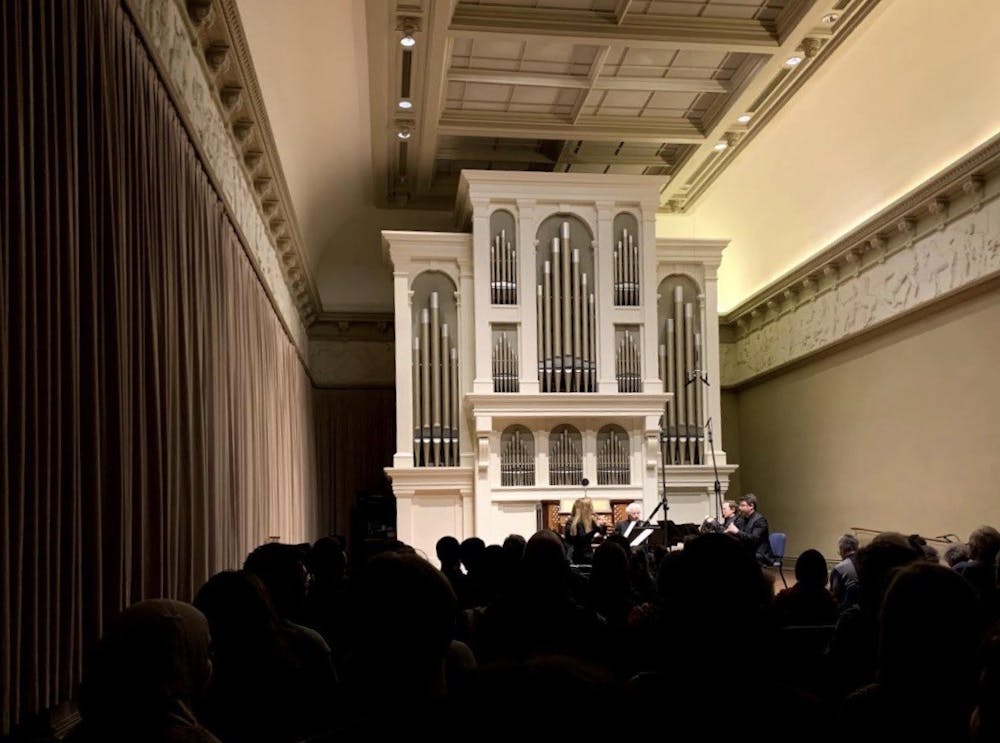After I went to my first orchestra performance at Peabody last week, I kept my word that I would attend more concerts this semester and went down to Mt. Vernon again on Sunday.
To my surprise, the performance was intense. I had never heard wind instruments by themselves sound so powerful, and yet again I was amazed by another performance I was initially reluctant to go to.
Five musicians started off the showcase with Beethoven’s Wind Quintet, Op. 4. The image of fairies prancing in a flower field filled my mind throughout the first movement. It was fast-paced and slightly suspenseful but also somewhat magical and ethereal.
The synchronization and harmony among the instruments was phenomenal. The subsequent movement brought up the pace and expressed a powerful staccato, and I was awestruck.
Brad Balliett’s “Marshlands” started with the strongest note of the whole showcase by far and made everyone jump in their seats. You would expect the high notes on the piano and low ones of the wind instruments to sound off together, but the discomfort seemed to be a part of the piece, as it produced a very eerie and almost dark tone.
All of the instruments used a whole range of notes and strayed away from the conventional sounds of each instrument. For some parts I wasn’t even aware that the flute was playing, as it seemed to transform itself into a totally different instrument with a different timbre.
Towards the end of the piece, the suspense was emphasized by the piano’s low notes that rang for about 10 seconds, and all of the musicians played the same exact melody repeatedly with carefully curated pauses.
Maybe it’s because I have no knowledge of how wind instruments work, but I thought it was truly amazing that not once did I see the musicians breathe in between the notes. The songs were long, but they found the perfect timing to seamlessly integrate their breathing patterns into one connected composition.
The flautist Marina Piccinini was the only performer who played in all three pieces, and she did so marvelously. She is on the faculty of the Peabody Conservatory and, as the program described her, is a “high-caliber artist who is devoted not only to her craft but also to music education and the creation of programs featuring powerful traditional repertoire and inventive new works.”
She was the first flautist to win the coveted Avery Fisher Career Grant and also won first place in the CBC Young Performers Competition and Concert Artists Guild International Competition.
Performances like this are not only a spectacle for the ears but also for the eyes. Because the seats weren’t elevated, I could see everyone in the audience extending and twisting their necks to look at the performers. An audience member next to me even brought his own binoculars.
The way the musicians moved their bodies in synchronization with the tone of the music and how they looked at each other added to their artistic interpretation of the songs, and the pieces truly became theirs in the moment.
Curious as to how I would take in the music differently if I couldn’t see anything, I closed my eyes for a bit to experience the music in a different way. I found that I felt each individual note even more powerfully this way.
I thoroughly enjoyed every bit of this Peabody showcase and it was a well-spent hour and a half to start the week.





